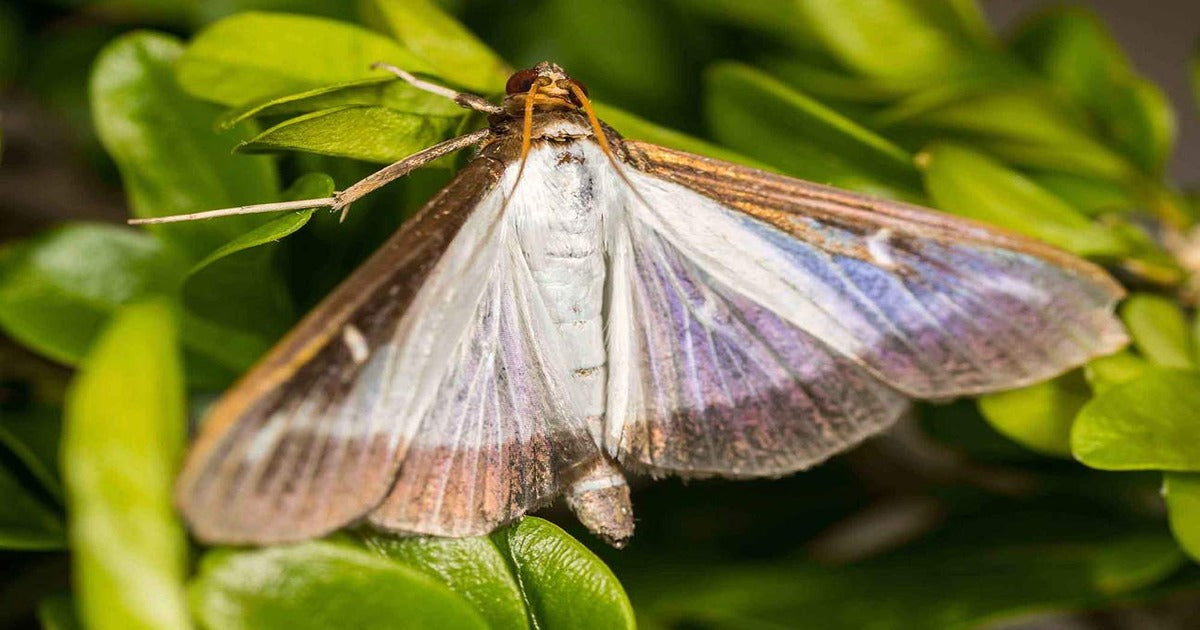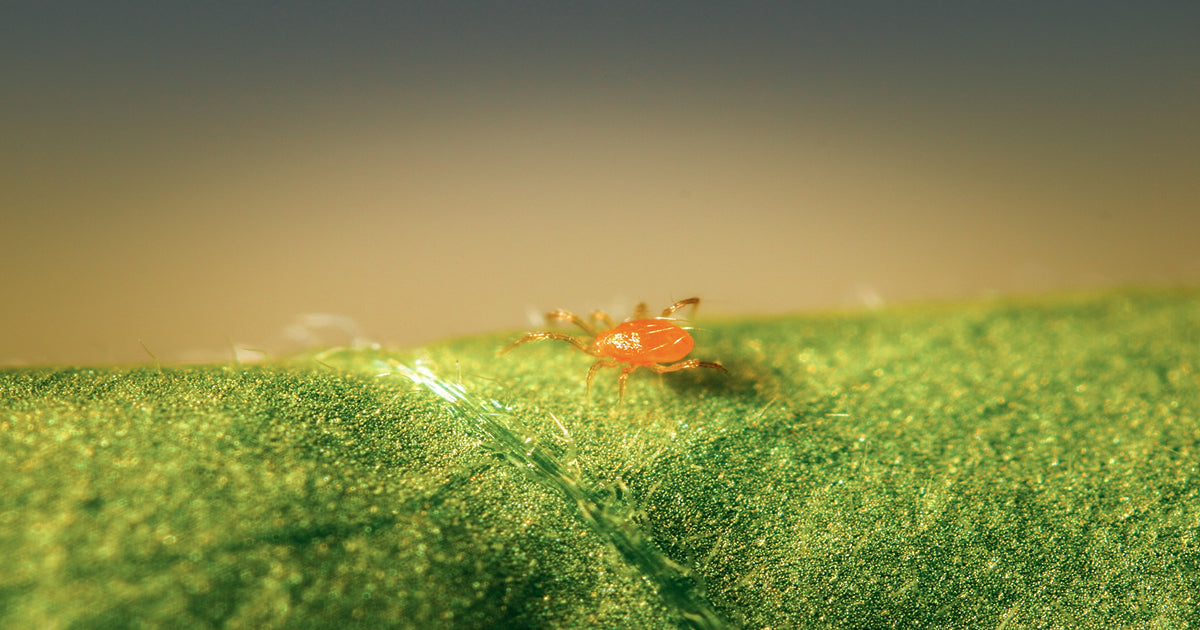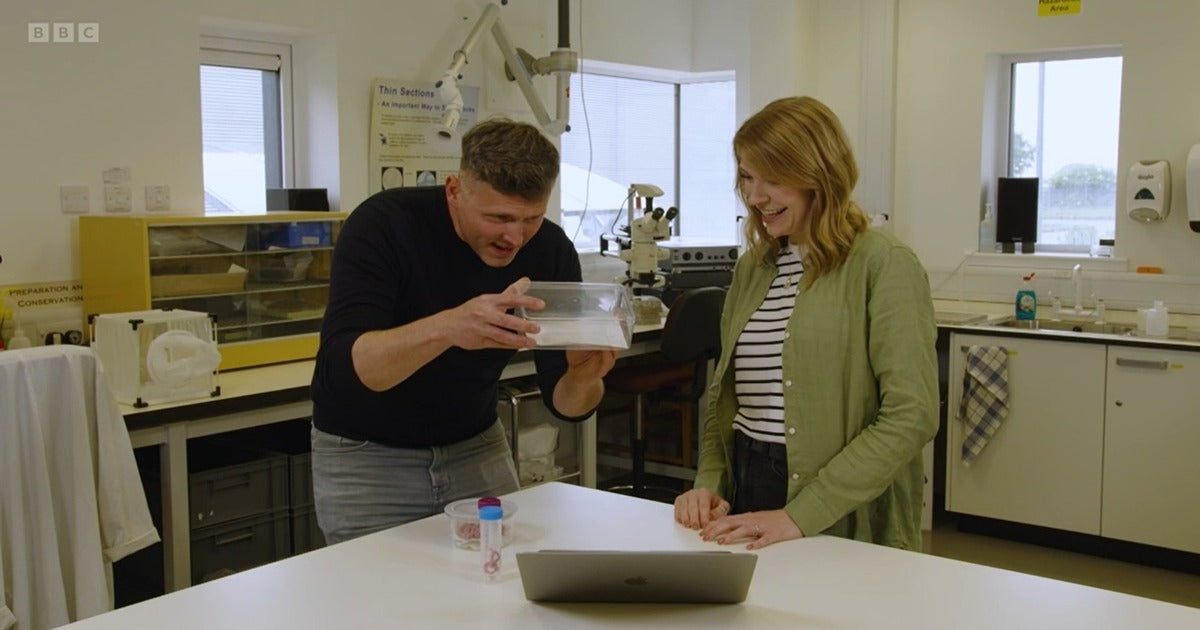
Dragonfli's Three-Step Strategy To Combat The Entire Box Tree Moth Life Cycle
Box Tree Moths overwinter as caterpillars that hide deep inside the Box Plant foliage. As temperatures warm, the caterpillars will pupate and transform into moths. The female moths will proceed to mate and begin laying eggs in little clusters on Box tree plants. These eggs will then hatch into the damaging caterpillars that devastate and kill Box plants and hedges.
Dragonfli are on hand to help, however, and can now provide natural solutions against two critical stages of the Box Tree Moth life cycle!

Box Tree Caterpillars feed on Box plants and hedges and are capable of killing Buxus entirely if left untreated.
Stage 1: Catch Adult Box Tree Moths With Pheromone Traps To Reduce Egg Laying
The first step to take in combating Box Tree Moths is to set up your Box Tree Moth Pheromone Traps. These traps will catch male Box Tree Moths and prevent them from mating with females. The traps will also provide you with a valuable early warning of Box Tree Moth activity.
Our Box Tree Moth Pheromone Traps are the first key component in the defence against Box Tree Moth infestations.
Box Tree Moths have 2-3 generations a year, so it is good practice to keep your Box Tree Pheromone Traps active all spring and summer. Each pheromone lure lasts about six weeks, after which it should then be replaced. You can find replacement lures by clicking here.
Pheromone traps used solely will not catch enough Box Tree Moths to prevent entire infestations, so please be sure to also follow the next steps.

Box Tree Moths are identifiable with white coloured wings bordered by brown. They have a wingspan of roughly 4cm.
Stage 2: Apply Nematodes Directly Onto Box Tree Caterpillars
If Box Tree Caterpillars are observed on Box plants, apply our Box Tree Caterpillar Killer Nematodes directly onto the caterpillars. Only apply the nematodes if caterpillars are present. More than one application may be required, which is why two sachets of nematodes are included in Box Tree Caterpillar Killer. Apply the first sachet when Box Tree Caterpillars are identified, and apply the second sachet about a week later.

Simply spray our Box Tree Caterpillar Killer directly onto the caterpillars and the nematodes will enter the pest via a natural opening, before killing the caterpillars from inside.
Make sure unopened nematode sachets are stored in a fridge to keep them fresh, and avoid applying nematodes on bright, sunny days, as nematodes are U.V sensitive. The optimum conditions for applying nematodes are warm, overcast, humid days. Alternatively, simply apply the nematodes early, or late on in the day.

Box Tree Caterpillars can grow up to 30mm in length and are a greenish-yellow colour. They can be concealed within webbing spun around buxus plants.
Stage 3: Invigorate Renewed Box Plant Growth

Our two natural solutions combine to provide a complete biological control of Box Tree Moths and protect your valuable Box Hedges and plants from this devastating pest.
If looking to provide your Box plants with a further aid to recovery, consider also applying our Soil Boost biostimulant granules.
Soil Boost acts as an organic slow release fertiliser, helping the Box plants achieve newly invigorated growth after stress and damage.
If you ever need any further advice on how to combat Box Tree Moths feel free to get in touch via email at sales@dragonfli.co.uk, via social media, or by giving us a call on 01376 563322, and we’d be happy to assist.
Comments (Responses)
Julian Ives
Hi Hazel,
Many thanks for getting in touch.
Sorry to hear about this, yes it sounds like the moths are using the wall cavity as an overwintering / breeding site.
We do indeed have the perfect product to eliminate Box Tree Moth eggs, however, in the form of our Box Tree Moth Egg Killer Sachets. These sachets contain thousands of tiny trichogramma parasitic wasps which will emerge from the sachet exit holes, locate the eggs and parasitise them. This will kill the eggs and provide a host for another trichogramma wasp to hatch from whereby it will locate more eggs and the cycle will continue. Once all of the eggs have been killed the trichogramma will naturally die off.
I would suggest purchasing a few of these sachets and placing them in areas where the wasps will be able to gain access to the wall cavity where the Box Moth eggs are present. The wasps do require temperatures to be around 15-35℃ in order to be active but I would presume that within the wall these temperatures will be matched.
Once temperatures increase outside I would suggest applying our Box Tree Caterpillar Killer Nematodes to any caterpillars visible on your Box hedging. In the meantime make sure you also have an active Box Tree Moth Pheromone Trap to catch adult male moths as they emerge.
I hope this helps but if you need any further assistance please just let us know,
Kind regards,
Julian Ives [Director, Dragonfli]
Hazel Levene
Last year we had a major problem with box hedge caterpillars/moths and used appropriate treatment to hopefully kill them. However we have a small gap in our front lounge between the skirting board and carpet and we were getting months flying in during the evening. Eventually l filled the gap with rolled up kitchen roll to stop them. We took our box hedge up over the weekend as we have once again have moths coming in. When taking up the hedge we realised that they had been coming in thru our three outside air bricks and breeding inside the wall of our house. We want to know how we can destroy any new eggs before the new season starts. Would be most grateful of any help you can give.
Julian Ives
Hi Faye,
Thanks for getting in touch and I’m sorry to hear of your infestation.
The caterpillars will indeed overwinter in a dormant state in buxus foliage. They can survive colder conditions through this state of hibernation and will become active again as temperatures warm up.
It is still too cold for outdoor biological control treatment, so I would suggest you first physically remove all of the caterpillars that you can find, then set up a Box Tree Moth Pheromone Trap. This trap will catch any adult male moths that arrive and will disrupt further mating and egg laying.
This should allow you to more easily control your infestation if it rears its head again this season. Once temperatures and day lengths increase I would suggest applying our Box Tree Moth Egg Killer Sachets to kill any freshly lain eggs. If caterpillars are again identified in the late spring and summer then spray our Box Tree Caterpillar Killer Nematodes directly onto the pests to kill them.
I hope this helps but if you need any further assistance please don’t hesitate to reach out again.
Kind regards, Julian Ives [Director, Dragonfli]
Faye
Hi our box hedges took a bad hit last summer and were in quite bad shape. My husband has just cut them back to see if we can revive them and we have now noticed a massive amount of caterpillars on the cuttings and also on the hedges? It’s like they were dormant? Is this possible? It’s been too cold and haven’t even seen any moths? What action should we take? Many thanks







17 June, 2024
Laurence Harding
Are your sachets of parasitic wasps for box tree moth control available in France and who stocks them?